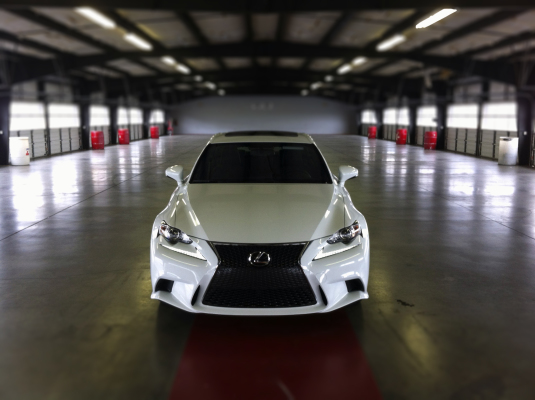
I walk out of the garage to the pit lane, splashing through a few puddles. I open the door. I start the engine. “Sweet Emotion” by Aerosmith begins to play. The car is staged at the end of pit row. Green flag. This is a good day.
Making the trip to Rockingham Speedway Race Track in North Carolina doesn’t mean I can escape the fact that whenever I go to a track, rain usually follows. My hope is that I can shake the curse by going to as many tracks as possible and beat the problem with sheer numbers. At the moment, though, it’s status quo: wet track, gray skies, fast car. Not that I’m complaining, mind you. I get to splash around with the 2014 Lexus IS.
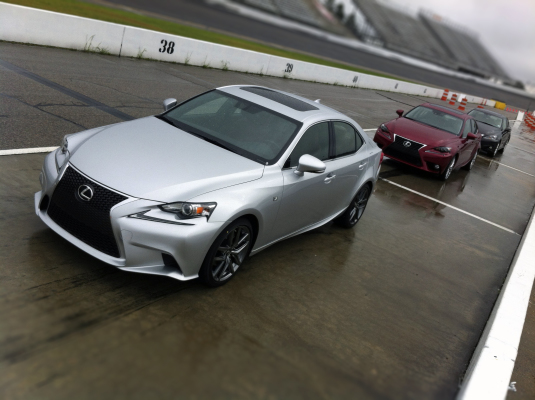
In 2001, Lexus debuted their contribution to the entry-level premium vehicle with the IS 300 sports sedan and has since maintained a fighting position for years against entry level luxury mainstays such as the BMW 3 series and Infiniti’s G35 and 37.
The IS went on to win swathes of awards for its performance and luxury appeal, and in 2005, the second generation brought a higher performance 3.5 liter V6 (thus prompting a nomenclature revision), gained an AWD drive optional layout, and led the way for the pièce de résistance, the IS-F. This variant took the IS from proper contender to “must have” territory for those shopping in the segment.

The 2014 IS 350 is the latest version of Lexus’s entry level luxury sports sedan. The 350 is powered by a 3.5 liter V6 that’s capable of 306 hp and 277 ft. lbs. of torque. It’s coupled with an 8-speed electronically controlled automatic transmission with paddle shifters for the rear-wheel drive version and a 6 speed automatic for the AWD. The rear-drive IS 350 has an estimated 0-60 of 5.6 seconds and a top track speed of 143 mph.
Present at the track was a collection of Lexii (which may or may not be the official plural) to test, including the 2013 IS 350 AWD that this latest generation is replacing. Lexus went in great detail how the improvements in the new model were more than superficial ones, but it’s evident the looks were given just as much consideration.
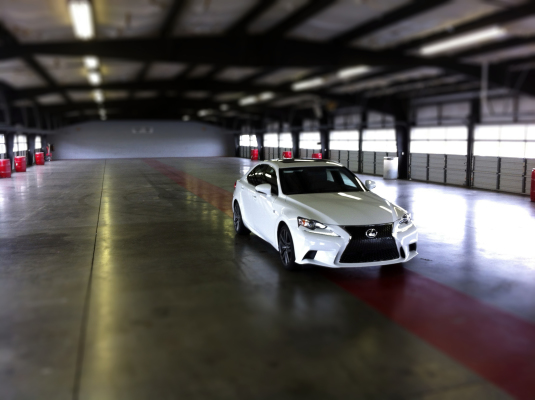
Lexus states that they were “obsessed with design” when refreshing this latest iteration of the IS and it’s most apparent in the evocative, predatory “Spindle grille” front fascia. their goal was to have the IS look as though an athletic, aggressive sports sedan was cut from a single block of steel. Every angle does indeed look ferocious, and the low belt line gives the IS an aggressive, low center of gravity look coupled with a wide stance emphasized through bold wheel arches, particularly in the rear. Much of the characteristics of the automaker’s halo car, the LFA, come through in the exterior contours, particularly from be B-pillar all the way to the back, the function of which is to induce similar aerodynamic effects in the sports sedan. With a drag coefficient of .28, the IS draws airflow towards the center of the car to increase its stability. Lexus has gone so far as to include underbody panels and fins to diffuse the air beneath it and adhere the car tighter to the road.
It seems the Lexus IS has the brains to go with the looks, as several systems feature an “intelligent” component of some sort, and the exterior is no exception. Opt for the available LED headlamps over the standard HID ones, and you get intelligent hi-beams. This switches off hi-beams when it detects not only lights from an oncoming car, but the taillamps of vehicles you might be riding up on.
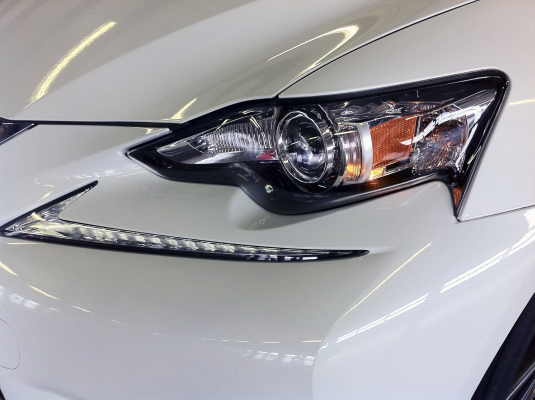
While the IS has always been a sporty ride, the 2014’s improvements focus heavily on driving fun and capability. On the inside, the hip point on the seats have been lowered as well as the steering column to give the driver a more integrated position in the cockpit. The dashboard has been divided into two zones, one for displays and the other for operation, giving the driver a better sense of control in the cabin.
Ideally, I’d like the surface I’m driving on to be significantly less greasy when I’m trying to plant the pedal down while inching towards the retaining wall of the track. There are a few puddles of standing water, and I’m aware of how squirrely things can get at a moments notice. The bit of track we get takes us rocketing out the pit lane on to the main track, then pulls us in on a simple inner course with maybe four or five corners before dumping us back onto the straight. It’s not that tricky of a route, but it’s ample enough road to see what the IS is capable of.
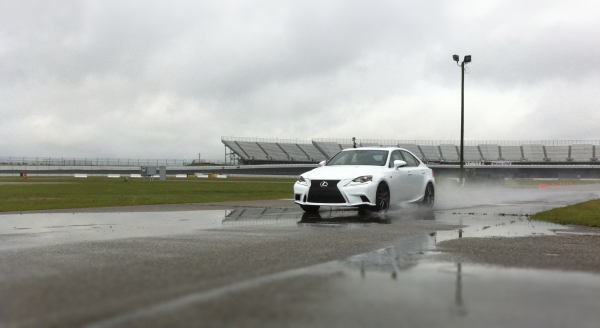
Engine-wise, it’s the same 2GR-FSE V6 from the previous generation. In the 2013, the engine had a more raw quality to that found in the new IS 350. In the latest one, the engine note sounded more mechanical, almost a little whinier, as if you took the energy of noise and transferred it through more functional channels. This was just one aspect that made the newer IS feel more sophisticatedly engineered.
The suspension is made up of independent multi-link systems and Lexus has, with their focus of making the IS 350 fun to drive, pointed out the improvement they’ve made in the model. Among the litany of changes (all of it in super dull engineering speak), some of the most noteworthy are yaw response improved by stiffening key point, changing of the power steering structure for enhanced steering feel, a 20% reduction in body roll, and 15% tire grip cornering by relocating the toe arms of the suspension points.
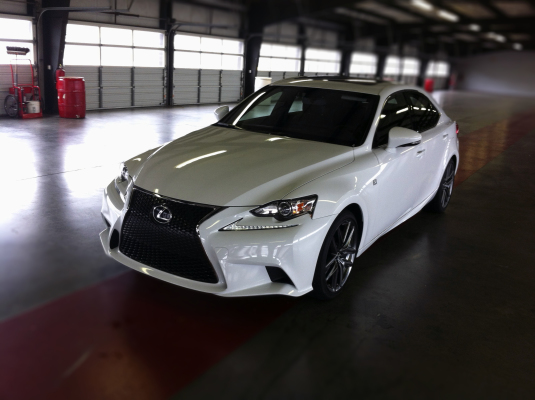
If you’re still awake, all that does seem to translate into a car that unquestionably provides a dynamic ride. Hitting those puddles did make things a little nerve-wracking, but the IS righted itself easily when things got a little unsettled. In turns, it was easy to find a comfortable margin of grip to power through without making a mess of things. When you crept towards the point of sliding, you felt it, and keeping it in that side of control was very easy. Is it the most exciting ride you’ll have in a sedan? Well, let’s put it this way: there are better cars to take to a track day, despite the fact that tracks make almost anything twice as fun. Take that with a grain of salt, the car will be great on highways and backroads, but I couldn’t help but wonder if I’d go back to the IS if there were similar cars available for my hot laps. Indeed, it would be the “medium difficulty” option if it were a game, cool and controllable enough to feel empowered, but the higher difficulty tiers would be a lot more fun, and once I unlock them, I’m putting the IS back in the garage.
Again, that sounds unfair, but in that context, it’s true. This isn’t a “drive to a track day” car, but in an everyday scenario, it would be the one you’d pick every time. The balance of comfort and real-world performance would be perfect. You would leave the brief thrashing moments with satisfaction and then ease into the comfort of relaxed driving effortlessly.
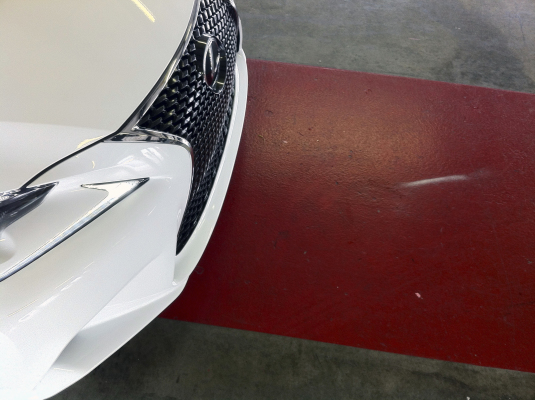
Also, if you like gears and are hardly satisfied by transmissions with a measly six, you’re in luck. The 350 RWD has a standard 8-speed sport shift transmission with paddle shifters, plenty of interlocking ratios to satisfy all the extra shifting you’d want to do. In all seriousness, a great deal of those aforementioned intelligence systems come into play in the managing of these, and as I demonstrated to myself, I think it’s best to leave the thinking to the car. On a basic level, I don’t hate paddle shifters, I think they have their place, but that place is on something that would really benefit from me flipping rapidly through gears. In the IS, when in manual, there were many moments where I’d simply want more revs, but I couldn’t downshift when I wanted to, the IS just beeped at me and disallowed my input. On one hand it was the car saying “hey moron, pay attention” but that was just it: the paddle shifting wasn’t a complement but a hinderance. Maybe a clutch pedal would make me go slower, but the disconnect between me and the copious rack of gears meant what I wanted to do in a corner versus what the car was going to let me do was out of synch.
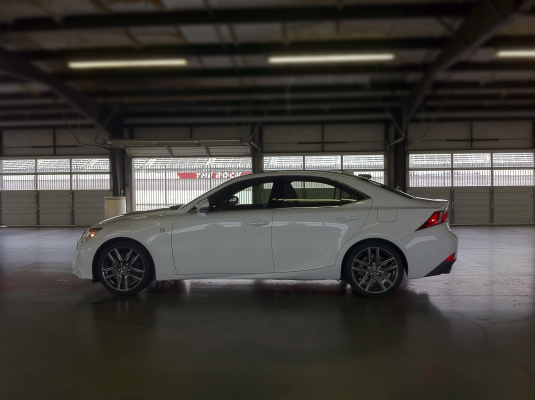
When I say “let the car do the thinking” I mean it. Among the intelligent systems in place is one called G AI-SHIFT that engages when you set the car in sport mode. This cleverly monitors the G-forces that are currently in play and uses this data to select the correct gear for the type of bend and speed you’re at. It’s one of those systems you’d probably wouldn’t know was there if it wasn’t mentioned, but this is the stuff a good luxury brand should be doing, and that’s making you think you’re an amazing driver without you even noticing the car did all the work.
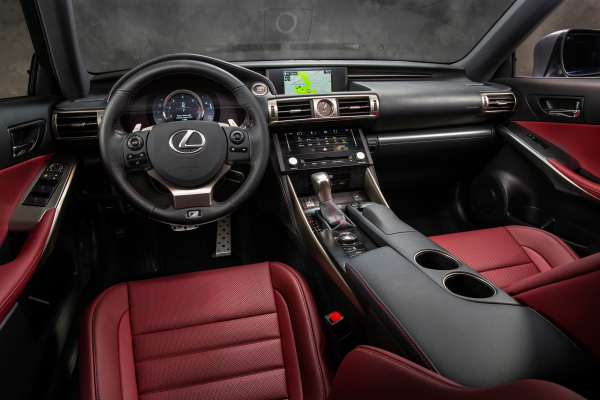
We’re done with the track and it’s time to to take the IS out onto real roads where delicious southern food and drinks served in mason jars await. As mentioned before, the transition from sportiness to just good ol’ driving is a seamless one, as the Lexus does both quite well. The insides are as nice as you’d expect, with silver trim and stitching details, ventilated seats to cool or heat your undersides, and a 7-inch VGA center multi-display screen that had loads of navigation and entertainment options. The Mark Levinson surround system adds to the atmosphere that the designers were going for, and even retained the same touch points like the same steel knobs that you’d find in the home system.

Along with a tighter tuned suspension, the exterior styling tweaks, and package-specific 18-inch wheels, the F-Sport bring to the IS something that was only previously found in the LFA, and that’s the sliding digital instrumentation cluster. The central hub, when prompted by pushing a button on the steering wheel physically slides to the right to reveal another screen that displays certain pages of info. It is a toy at best, but it’s still fun, and it’s certainly something you’d quickly demonstrate to passengers.
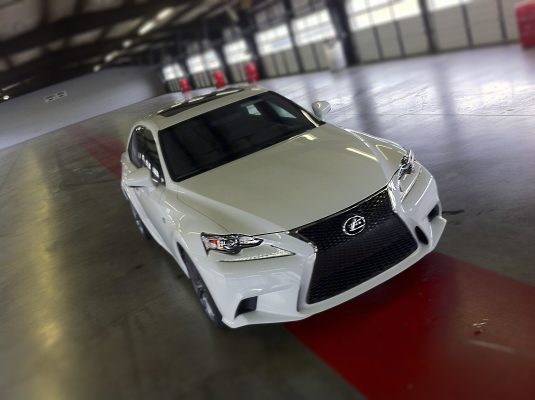
The next generation Lexus IS is undoubtably an improvement over the old one, and the IS has stood its ground over good decade, but will the improvements be enough this time around? One of the trends that have prominently come to the forefront this year is a fresh battle for this particular segment, the entry-level luxury car, and there are drastic changes happening that changes the game from here on out. Some tried and true competitors are going away, like BMW’s 3-series, while companies like Audi and Mercedes are introducing regionally-or-totally new models like the A4 and CLA. It’s tough to say how this iteration will perform against the competition, but the IS has in the past been a platform of continued improvements and satisfaction for its drivers. The star of this segment may be the one the burns as bright as it does long.
-Promiscuous Data-
Curb Appeal: The spindle grille turns heads, but is certainly polarizing. Be bold and stand out, I say.
Notable Rival of the Week: a wet track, only to dry as we left. Southern BBQ-stained fingers near a white prototype luxury car.
Price & Availability: Available “This Summer” so the arrival is imminent. The IS 250 RWD starts at $35,950 while the IS 350 AWD kicks off at $41,700 without packages like the F-sport ($3,115-$3,620 depending on model).
Fuel Economy: 19 city, 26 highway for the 350 RWD
Bottom Line: Segment mainstay with a great balance of luxury and performance, but do you buy it with your head more than your heart?
Words and photos by – Alex Kalogiannis
Interior Photos provided by Lexus

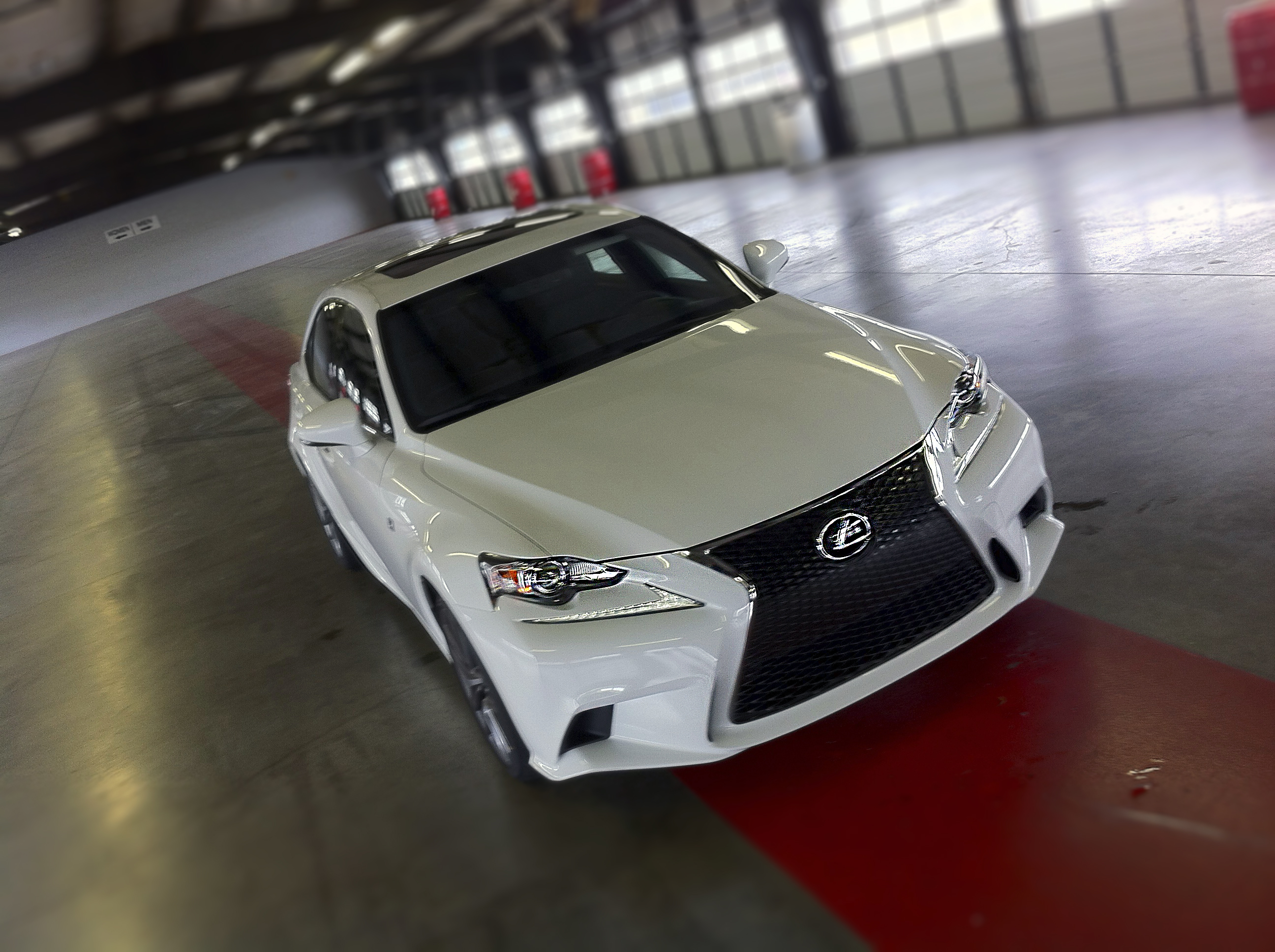
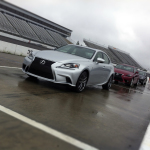
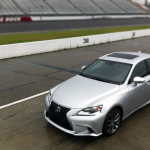

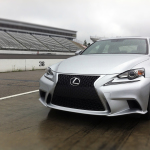
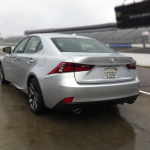
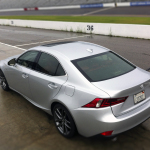
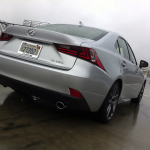
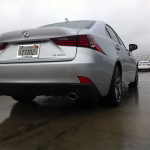
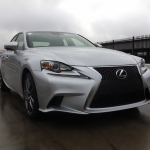
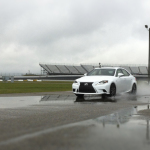
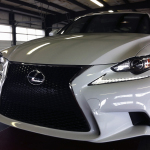
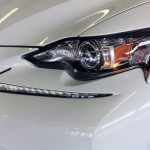
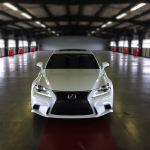
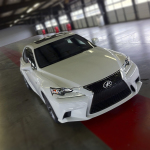

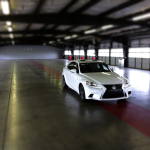

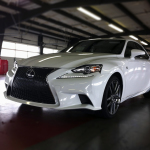


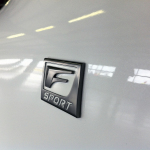
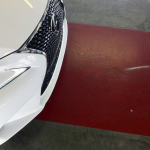
Great article, Alex. You captured the essence of the IS well.